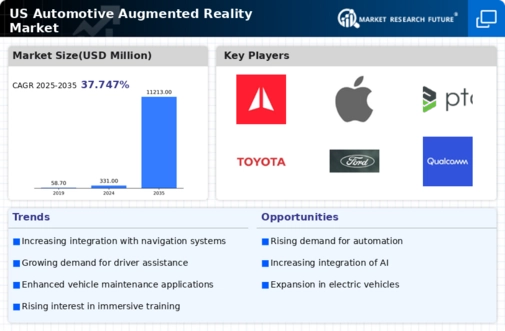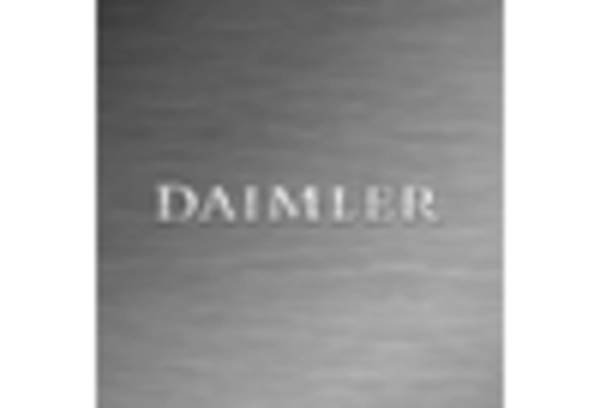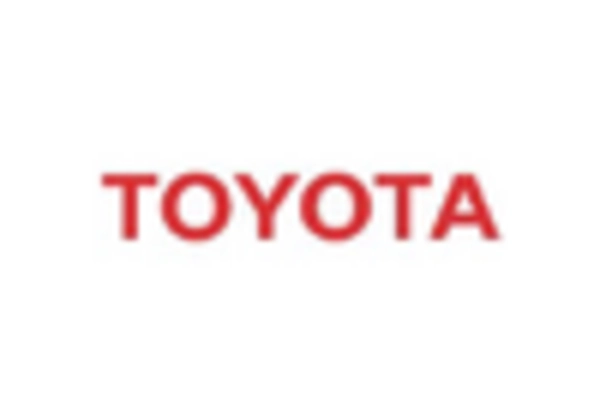Technological Advancements in AR Hardware
Technological advancements in augmented-reality hardware are significantly influencing the automotive augmented-reality market. Innovations in display technologies, such as heads-up displays (HUDs) and smart glasses, are enhancing the user experience by providing clearer and more immersive visual information. The introduction of lightweight materials and improved optics is making AR systems more accessible and cost-effective for manufacturers. As of 2025, the market for AR hardware in the automotive sector is estimated to reach $5 billion, reflecting a growing recognition of the value that augmented-reality can bring to vehicle design and functionality. These advancements are likely to encourage automakers to invest in AR technologies, thereby propelling the automotive augmented-reality market forward.
Consumer Preference for Connected Vehicles
Consumer preference for connected vehicles is a driving force behind the automotive augmented-reality market. As vehicles become increasingly integrated with smart technologies, consumers are seeking features that enhance connectivity and interactivity. Augmented-reality applications, such as navigation overlays and real-time traffic updates, are becoming essential components of the connected vehicle experience. Recent surveys indicate that over 70% of consumers express interest in vehicles equipped with augmented-reality features. This trend suggests that automakers must adapt to consumer expectations by incorporating AR technologies into their offerings. As a result, the automotive augmented-reality market is likely to see substantial growth as manufacturers respond to this demand for connectivity.
Rising Demand for Enhanced Safety Features
The market is experiencing a notable surge in demand for enhanced safety features. As consumers increasingly prioritize safety, manufacturers are integrating augmented-reality technologies to provide real-time information about potential hazards. This integration allows drivers to receive alerts about obstacles, lane departures, and other critical information directly on their windshields. According to recent data, the market for advanced driver-assistance systems (ADAS) is projected to grow at a CAGR of approximately 20% through 2027. This growth is likely to drive investments in augmented-reality solutions, as automakers seek to differentiate their offerings in a competitive landscape. Consequently, the automotive augmented-reality market is positioned to benefit from this heightened focus on safety, potentially leading to increased adoption rates among consumers.
Government Regulations Promoting Safety Innovations
Government regulations promoting safety innovations are playing a crucial role in shaping the automotive augmented-reality market. Regulatory bodies are increasingly mandating the inclusion of advanced safety features in new vehicles, which often necessitates the integration of augmented-reality technologies. For instance, regulations aimed at reducing traffic accidents and improving driver awareness are encouraging manufacturers to adopt AR solutions that provide real-time data and alerts. This regulatory push is expected to drive the automotive augmented-reality market, as compliance with safety standards becomes a priority for automakers. The potential for financial incentives for manufacturers who implement these technologies further underscores the importance of government regulations in fostering innovation within the market.
Growing Interest in Autonomous Driving Technologies
The growing interest in autonomous driving technologies is significantly impacting the automotive augmented-reality market. As the automotive industry moves towards greater automation, augmented-reality systems are being developed to assist in navigation and situational awareness for both drivers and autonomous vehicles. These systems can provide critical information about the vehicle's surroundings, enhancing safety and efficiency. Market analysts project that the autonomous vehicle segment will account for a substantial share of the automotive market by 2030, with AR technologies playing a pivotal role in this transition. This trend indicates that the automotive augmented-reality market is likely to expand as manufacturers invest in AR solutions to support the development of autonomous driving capabilities.

















Leave a Comment